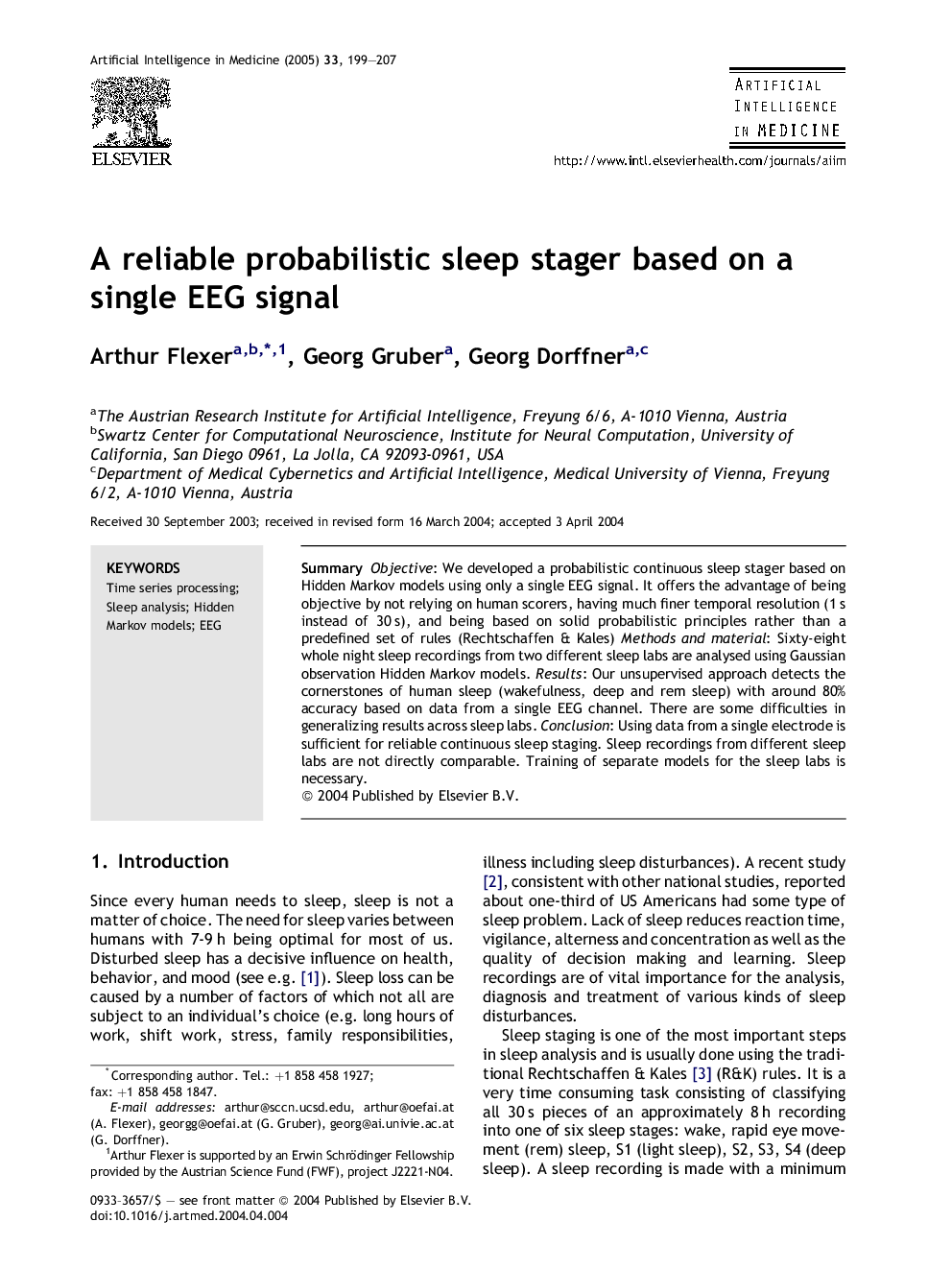| Article ID | Journal | Published Year | Pages | File Type |
|---|---|---|---|---|
| 10320632 | Artificial Intelligence in Medicine | 2005 | 9 Pages |
Abstract
Objective: We developed a probabilistic continuous sleep stager based on Hidden Markov models using only a single EEG signal. It offers the advantage of being objective by not relying on human scorers, having much finer temporal resolution (1Â s instead of 30Â s), and being based on solid probabilistic principles rather than a predefined set of rules (Rechtschaffen & Kales) Methods and material: Sixty-eight whole night sleep recordings from two different sleep labs are analysed using Gaussian observation Hidden Markov models. Results: Our unsupervised approach detects the cornerstones of human sleep (wakefulness, deep and rem sleep) with around 80% accuracy based on data from a single EEG channel. There are some difficulties in generalizing results across sleep labs. Conclusion: Using data from a single electrode is sufficient for reliable continuous sleep staging. Sleep recordings from different sleep labs are not directly comparable. Training of separate models for the sleep labs is necessary.
Related Topics
Physical Sciences and Engineering
Computer Science
Artificial Intelligence
Authors
Arthur Flexer, Georg Gruber, Georg Dorffner,
